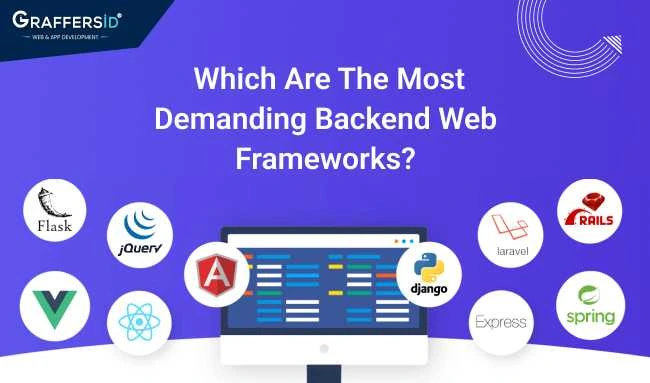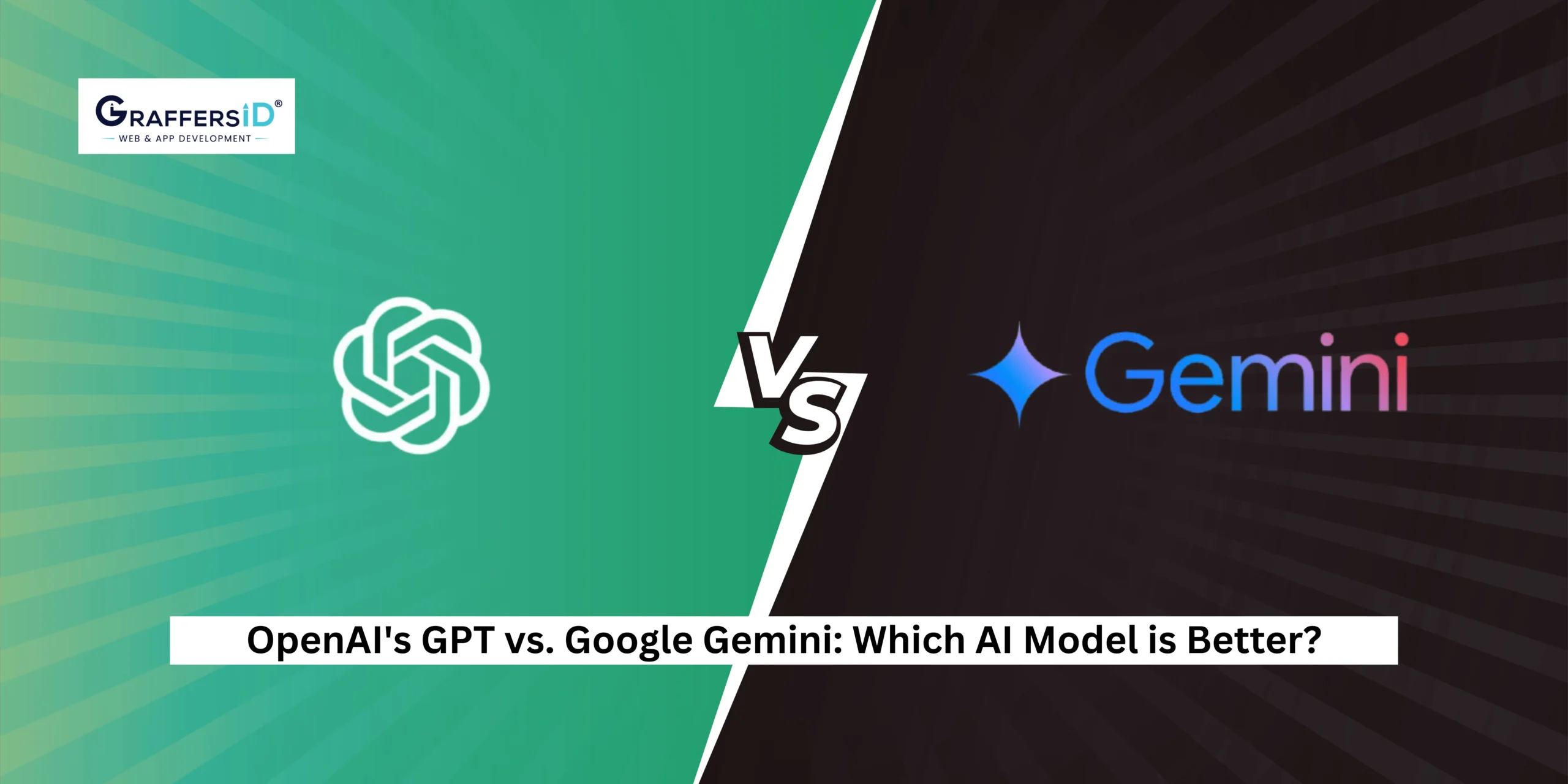When it comes to web development, the backend is something you can not compromise on. That being said, you must start with choosing the right backend framework to ensure a proper development process. And, if you are still confused about choosing between the most popular backend languages in 2023, you have landed on the right page.
Choosing The Right Backend Stack
The decision is further complicated by the fact that there is no way to definitively rank one language, framework, runtime environment, or stack over another because each has unique benefits and drawbacks.
Different technologies could be interchangeable in some tasks. Others would find it impossible. Making an educated decision is crucial as opposed to relying on widely held misconceptions or adopting the simplest course of action.
To help you with this decision, we’ll walk you through the most well-liked and widely-used backend web technologies in this post.
A set of programming languages, frameworks, libraries, databases, servers, and other components known as a “technology stack” are required to create any type of software.
These parts are stacked one on top of the other to strengthen one another and create a complete working application.
The stack in web development consists of the following:
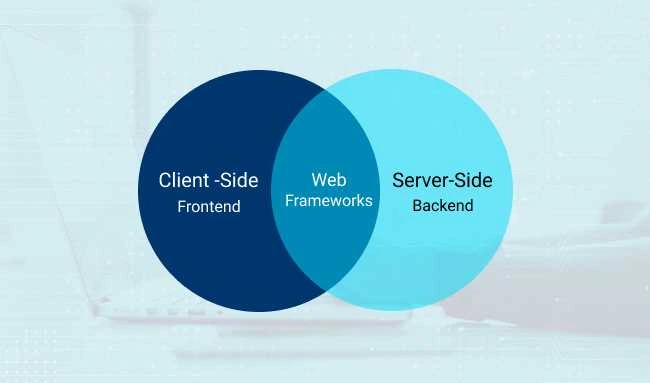
Frontend: The frontend, also known as the client side. It is the area of the program that is visible and easily accessible to users. Components like HTML, CSS, JavaScript, and its frameworks make up the basic frontend technology stack (for example, React and Angular).
Backend: Users cannot see or access the backend, which is also known as the server side. It serves as the application’s “backbone.” Programming languages like Ruby and Python, libraries and frameworks like Ruby on Rails and Django, and a JavaScript runtime environment like Node.js are the most often used backend components.
List Of The Most Popular Backend Languages
Django

A well-known open-source backend framework built on the Python programming language, Django, follows a Model view controller (MVC).
One of the simplest backend languages, Django is appropriate for the creation of complex and feature-rich database-driven websites. One of the greatest backend web development frameworks is Django.
The backend framework allows for better pluggability, less code, more reuse, and quicker development. All Django activities are performed in Python, and an optional admin interface is provided to assist with operations like creation, reading, updating, and deletion. Numerous well-known websites, including Disqus, Mozilla, and The Washington Times, use Django.
Django Advantages
Faster framework:
Django was designed to assist developers in accelerating the whole development process from beginning to end. It is also relatively easy to use with a short learning curve. It is regarded as a straightforward backend for websites.
Features:
Django offers a large range of capabilities to assist users in handling some specific web development needs. It assists with several tasks, including user authentication, sitemaps, content management, and more.
High Security:
Django is a safe framework that aids users in avoiding several security problems, including as request forgery, cross-site scripting, clickjacking, and SQL injection. Users are given a method for user authentication so they may safely save and manage their passwords and accounts.
Django Features
Open source:
The Django web application framework is free and available to use. It is trustworthy, straightforward, and easy to use.
Unique Naming:
Django has its own naming conventions for all of its tools and features. In contrast to Yii and Lavarel, it also offers an admin interface that is simple to use.
Simple syntax, MVC core architecture, ORM (Object Relational Mapper), Middleware support, and HTTP libraries are just a few of Django’s standout characteristics. Additionally, Django contains a web server of its own, a framework for Python unit testing, and various components needed to resolve specific problems.
Django Drawback
Not For Small Projects:
According to some engineers, Django is not a good backend framework for small projects since it requires a lot of code. More computing power and bandwidth are also required.
Complicated Framework:
The absence of conventions is another drawback of the Django framework. For developers, the absence of standards causes a variety of issues, such as low comfort levels, contrasting components, and sluggish development rates.
Limited Control:
Due to the monolithic structure of the Django framework, development teams have less control over the process. Similarly to this, developers must write more programs due to fewer dependencies.
Laravel

For creating Symfony-based web applications that adhere to the model-view-controller (MVC) architecture, Lavarel is the best open-source PHP web framework.
It provides specialized dependency management and a modular packaging mechanism. One of the top web frameworks is Laravel, which some experts believe to be the greatest backend development tool.
Along with offering its customers several methods of accessing relational databases, Laravel also provides application deployment and maintenance tools. Laravel’s source code is hosted on GitHub and is available under an MIT license.
Laravel Advantages
Easy Configuration:
Since Laravel allows for basic settings, implementing authentication is quite trivial. Simple structuring of authorization logic and straightforward resource access management is made possible by Laravel.
Simple APIs:
The SwiftMailer module integrates seamlessly with Laravel’s simple API. Mandrill, SMTP, Mailgun, Amazon SES, and SparkPost drivers are available from Laravel. Additionally, it sends mail and has PHP mail drivers. Fast application mail sending is possible with Laravel thanks to a local or cloud-based service. Additionally, it offers assistance with delivering notifications via several delivery methods.
Cache backends:
Redis, Memcached, and other popular cache backends are readily supported by Laravel. It makes use of the file cache driver to carry out caching of objects in a file system. APC or Memcached are examples of in-memory caches used by larger programs. Additionally, users of Laravel may set up several cache setups.
High-end Error Handling:
An exception and error handling system is preconfigured in a Laravel app. Additionally, Laravel incorporates the Monolog logging framework and provides support for numerous log handlers.
Validating:
Laravel is test-friendly and provides PHPUnit support in addition to an application-ready phpunit.xml file. The framework includes helpful techniques for testing expressive applications. Additionally, Laravel offers simple user behavior modeling for tasks like form completion, link clicks, and app requests.
Laravel Features
Templates:
The Laravel framework has a lightweight built-in template engine that may be used to generate layouts and seed content. Additionally, widgets containing JS and CSS code are included. Simple and complicated sectioned layouts may be developed using Laravel templates.
MVC Architectural Support:
To efficiently segregate the presentation and business logic layers, Laravel provides support for the MVC architecture pattern. The Laravel MVC delivers a wide range of features, enhances performance, and increases scalability and security.
ORM Mapping:
MUsers of Laravel can use Eloquent Object Relational Mapping (ORM), which includes a straightforward PHP Active Record implementation. Without writing SQL code, ORM enables PHP-based database query construction for application developers. Comparatively speaking, an ORM is quicker than other PHP frameworks.
High Security:
The Laravel framework offers robust password hashing and salting for online applications. Because of this, databases do not store passwords in plain text. Laravel also creates encrypted passwords using the Bcrypt Hashing Algorithm. Prepared SQL statements are used in this development framework to lessen the likelihood of injection attacks.
Laravel Drawbacks
Slower Development:
In order to remain in any sector nowadays, a development pace is quite essential. Additionally, it has been noted that compared to other backend frameworks, Laravel’s development speed is a little slower.
Limited Support:
Laravel offers less built-in support than competing backend frameworks like Django and Ruby on Rails. Although this restriction is overcome by third-party solutions, utilizing Laravel still has its drawbacks.
Uncertain Updates:
This backend framework’s infrequent upgrades might put developers in danger, especially if they don’t take any safety measures and accept them.
Express.JS

The Node.js online application framework Express.js, also referred to as Express, is open-source software that is distributed under the MIT license. It serves as a standard Node.js server framework and is employed for the development of APIs and online applications.
Along with the AngularJS frontend framework, NoSQL databases, and Express, the MEAN stack includes backend components. One of the top frameworks for creating web applications is Express.
Express.js Advantages
Easy learning:
The majority of front-end engineers utilize JavaScript, one of the most popular programming languages. The Node.js backend is simple for developers to use because understanding it doesn’t take much time or effort.
Follows a single language:
Node.js is a single programming language that enables programmers to create server-side applications using JavaScript. Employing a JavaScript runtime environment, it enables Node.js developers to construct both the backend and front-end web apps. There is no requirement for developers to use any additional server-side languages. The majority of widely-used browsers now support JavaScript, making the deployment of web applications more simple.
Full-stack JS features:
Node.js is a full-stack JavaScript backend that can be used for both server-side and client-side applications. Therefore, it is unnecessary to rely on separate front-end and back-end developers. It is a fantastic method to save both time and money.
High speed:
High speed is delivered because Node.js interprets code using Google’s V8 JavaScript engine. The engine supports the conversion of JavaScript-based code to machine code and makes it simpler to successfully implement the code. Because JavaScript provides non-blocking I/O operations, the runtime environment further enhances the speed of execution.
Express.js Features
Quick Server-Side Programming:
A Node.js framework called Express.js offers several of Node.js’ most popular capabilities. Throughout the course of the program, these characteristics can be used in many ways. Instead of creating large amounts of code, Express JS developers may quickly include a few lines of code. Compared to Node.JS, Express offers a fast web application development process.
Easy Sharing:
Routing is a technology that enables web applications to save URL-based web page states. Users can visit shared URLs to access the state-storage page. URLs can be shared with others. In contrast to Express.js, which offers a more complex routing system capable of managing dynamic URLs, Node.js offers a primary routing mechanism.
Easy Debugging:
During development projects, bugs are relatively prevalent and might result in severe program problems. Developers must quickly locate the causes of issues and fix them. Express.js provides an easy-to-use debugging framework to help developers locate the root of application errors.
Express.js Drawbacks
Limited Features:
Express.js’s lack of a specified body parser is a source of complaints from many developers. These programmers claim that the inclusion of a body parser by default will make this backend architecture a more dependable option.
Limited Security:
In terms of security, Express.js doesn’t provide anything particularly noteworthy. When utilizing this backend architecture, it relies on how securely developers strive to create their applications.
Not for Huge Projects:
Despite working exceptionally well for mid-sized and small projects, some developers claim that Express.js is not the best middleware backend framework for large projects.
Read Also: Express JS vs Node JS: What Are The Differences?
Nest.JS

Nest.JS is used to create server-side Node.JS applications. Because TypeScript is used in the Nest framework, developers may create highly scalable and tested apps.
Nest.JS, which is built on top of Express.JS, provides a variety of features and out-of-the-box APIs. Nest.JS characteristics may be used by developers to create applications with minimal code.
Angular architecture is strongly reliant on Nest.JS. A structured environment is layered inside a number of files. By segmenting the files into several modules, Nest.JS enables developers to concentrate on a specific feature at a time.
Nest.JS Advantages
Modules:
Modules are used to divide functionality into logical, reusable components and to structure the code. A “@Module” decorator that adds metadata is applied to grouped TypeScript files. This information is used by Nest.js to arrange the application’s structure.
Providers:
Providers abstract complexity and logic in any form. It is possible to build new providers and inject them into controllers or existing providers.
Controllers:
The client side of an application can use controllers to manage incoming requests and offer suitable answers (for example, call to the API).
Nest.JS Features
Leverages Powerful Command Line Interface (CLI) for TypeScript, a strongly typed language that is a superset of JavaScript, to increase productivity and development efficiency.
Built-in dependency injection (DI) container, which makes applications more efficient and modular.
Lazy offers support for hundreds of Nest-specific modules that make it simple to interact with popular technologies and ideas, including TypeORM, Mongoose, GraphQL, Logging, Validation, Caching, WebSockets, and much more.
Ruby on Rails

A Ruby-based server-side web application framework with an MIT License, Ruby on Rails is sometimes referred to as Rails. An MVC framework called Rails provides web pages, online services, and default database structures. One of the top web development frameworks, Ruby on Rails, is regarded as the finest-performance web framework by several programmers.
The usage of web standards like XML or JSON for data transfers and CSS, JavaScript, and HTML for interfaces is encouraged by Ruby on Rails. The active record pattern, convention over configuration (CoC), and don’t repeat yourself are among the software engineering patterns that Rails prioritizes (DRY).
Ruby on Rails Advantages
Time-Efficiency:
Ruby on Rails provides a variety of pre-made modules and plugins, allowing developers to spend less time writing boilerplate code. Compared to situations when they use other frameworks, it helps development teams to reduce application build times.
Stability:
Ruby on Rails gives programmers access to standardized file storage methods and coding standards. In addition to saving a lot of time, it aids in maintaining a project’s structural uniformity and readability.
Reasonably Priced:
Ruby on Rails is available as open-source software using the MIT license. It implies that there is no cost for consumers to get the framework. Users can add features by using Gems rather than building them from the bottom up. They can thus save a great deal of time and effort. The open-source website GitHub offers gems that may be downloaded for a variety of uses.
Faster Development:
Ruby on Rails allows users to create bug-free software through high-quality development. Users can access numerous testing features, including mocking, expectation syntax, and test benchmarking, through the Rails core’s Minitest tool. The best platform for behavior-driven deployment (BDD) and test-driven deployment is Ruby on Rails (TDD). Cost-cutting is a benefit of both of these development strategies.
Adaptability:
Ruby on Rails’ backend provides customers with a lot of scalability. For websites focused on serving a large volume of clients, it is more suited than many of its competitors. One of the factors that lead many people to choose Ruby on Rails is its scalability.
Ruby on Rails Features
Modern Architecture:
Ruby on Rails is built on the MVC design, one of the most popular web application frameworks in the world. The lan may be readily learned by developers with expertise in utilizing MVC techniques. This design divides codes into several functional groups, such as the data layer, display layer, and resource layer maintenance.
Template Method:
One of the most used backend languages, Ruby on Rails, depends on the active record library, which makes it simple for developers to execute database interaction query design. SQL queries that receive outputs and return objects are created from questions written in the Ruby programming language. Since the Ruby on Rails active record library is fairly robust, creating an SQL query is not as necessary.
Convention Over Configuration:
Because Ruby on Rails offers dynamic runtime extensions, reflections, and conventions, it does not use configuration files. It uses a “Convention over Configuration” strategy to assign value automatically without requesting user input. Software systems like Java web application frameworks use several configuration files, each with a variety of options. Due to the fact that users do not have to allot time for configuring files, convention increases productivity.
Simple Testing:
Ruby on Rails provides RSpec, a user-friendly unit testing solution, making testing straightforward. Users may quickly test individual functions using independent calls, ensuring that an application has received sufficient testing.
Ruby on Rails Limitations
Better Documentation:
Rails does not offer developers adequate high-quality documentation. It can be challenging for programmers to locate valid documentation for obscure libraries and gems. Because of this, development teams frequently choose a test suite instead of documentation.
Slow Runtime Performance:
Users have several issues as a result of Rails’ slow runtime speed. If you are working with a high-traffic application using this backend technology, poor runtime speed will be your worst nightmare.
Not Enough Flexibility:
Due to its lack of flexibility, RoR is not thought to be the best option for unusual sorts of projects. Here, a poor choice might have devastating consequences.
Spring Boot

The inversion of the control container for the Java platform is the open-source Spring Framework. The main functions of this framework may be used by Java applications. For building web applications based on the Java EE platform, users can make use of a variety of extensions.
Spring Advantages
- Support for Undertow, Jetty, and Tomcat is built-in
- No need for boilerplate configuration.
- DevTools facilitates server auto restart for code and configuration upgrades.
- It’s simpler to handle dependencies
- The management of profile-specific attributes is simple.
- Customizing application properties is simple.
- Developers may easily use SpringBoot Starters.
Spring Features
Initialization:
SpringBoot supports lazy initialization on the developer’s end. Activating this feature enables developers to construct beans in response to needs rather than at the beginning of an application. Lazy initialization can thereby reduce the amount of time required for the program to start.
Personalization:
Modification of startup banners is possible by adding a banner.txt file to the user’s classpath. By referring to the Spring banner. location attribute to the appropriate file location, banners may also be changed. If a file uses an encoding other than UTF-8, users can provide a spring.banner.charset. Users have the option of adding text files and the pictures banner.jpg, banner.gif, and banner.png to a classpath. They may also set the location of the Spring.banner.image.
Fluent Builder API:
Developers can use your fluent builder API or SpringApplicationBuilder to create an ApplicationContext hierarchy.
Liveness State:
An application’s Liveness state is in charge of informing the user if its internal state permits it to operate or, in the event of a failure, how to proceed with the recovery. The infrastructure restarts the program if a Liveness state is broken, rendering it unrecoverable.
Spring Limitations
Less Control:
Spring Boot increases the size of deployment files and creates unexpected dependencies. This leads to the issue of having no control over an application. For control freaks, it is unquestionably the incorrect decision.
Not Ideal For Monolithic Projects:
Spring Boot is excellent for building microservices. For creating monolithic apps, it might not be the ideal option.
Not For Beginners:
You shouldn’t use it if you are not familiar with the Spring ecosystem and AOP programming or if you have never coded with the Spring. Yes, using Spring Boot may be difficult for you as a beginner developer.
Read Also: How To Develop Web Applications Using Ruby on Rails
Node js
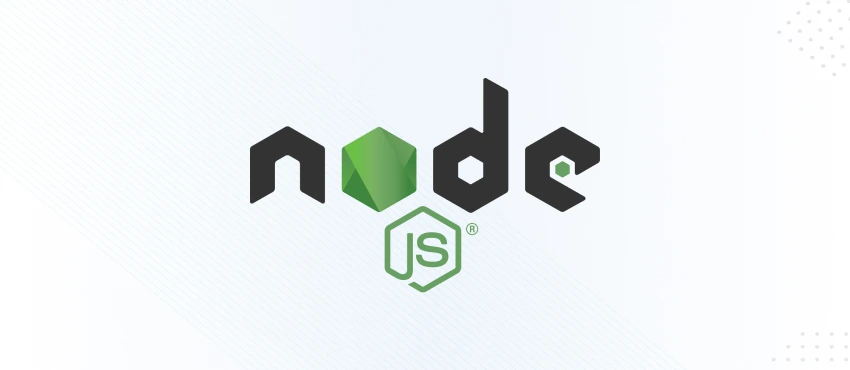
Node js is a versatile backend runtime environment that uses JavaScript. It is known for its event-driven, non-blocking I/O model, making it highly efficient for building scalable network applications.
Node js allows developers to use JavaScript for both frontend and backend development, fostering code reusability and reducing the need to switch between languages. It excels in handling real-time applications, APIs, and microservices.
Node.js Features
- Non-Blocking I/O: Node js’s event-driven, non-blocking I/O model enables handling a large number of concurrent connections efficiently.
- npm (Node Package Manager): npm provides access to a vast ecosystem of packages and modules for building Node js applications.
- Scalability: Node js is well-suited for building scalable and real-time applications due to its asynchronous nature.
- Cross-Platform: Node js is cross-platform and can run on various operating systems.
- V8 JavaScript Engine: Node js uses the V8 JavaScript engine, known for its speed and performance.
- Community and Libraries: Node js has a thriving community and a wide range of libraries and frameworks for various purposes.
- WebSocket Support: Node js supports WebSockets, making it suitable for building real-time chat applications and online gaming platforms.
Node js Advantages
- JavaScript Everywhere: Node js enables developers to use JavaScript on both the client and server sides, promoting code consistency and simplifying development.
- Efficiency: Its event-driven, non-blocking I/O model allows Node.js to handle a large number of concurrent connections efficiently.
- Vast Ecosystem: Node js has a rich ecosystem of packages and libraries available through npm (Node Package Manager), streamlining development.
- Scalability: Node js is well-suited for building scalable applications, making it a preferred choice for real-time applications, chat apps, and more.
Node.js Drawbacks
Single-Threaded:
While Node js’ single-threaded nature offers high efficiency for I/O-heavy tasks, it may not be the best choice for CPU-bound operations.
Callback Hell:
Managing asynchronous code can lead to callback hell, where deeply nested callbacks become hard to read and maintain. However, this can be mitigated with proper code structuring or using Promises and async/await.
Python

Python’s dominance in the backend languages arena remains unwavering, owing to its simplicity, versatility, and robust community support. With frameworks like Django and Flask, Python empowers developers to build scalable web applications swiftly. Additionally, its seamless integration with emerging technologies such as machine learning and artificial intelligence further solidifies its position as a preferred choice for backend development.
Python Features:
Python boasts simplicity, readability, and versatility, with a rich ecosystem of libraries and frameworks. Its dynamic typing and high-level abstractions streamline development, while features like list comprehensions and generators enhance expressiveness.
Python Advantages:
Python’s popularity stems from its ease of learning, rapid development, and extensive community support. Frameworks like Django and Flask facilitate web development, while its integration with machine learning and data science tools makes it a preferred choice for AI applications.
Python Limitations:
Despite its strengths, Python may suffer from performance limitations in compute-intensive tasks due to its interpreted nature. Additionally, its dynamic typing can lead to runtime errors, necessitating thorough testing and type annotations for larger projects.
Golang (Go)
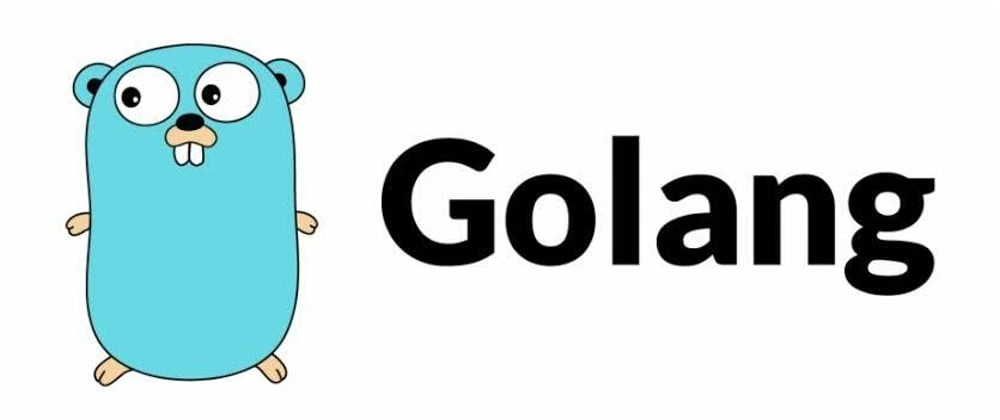
Golang’s rise in popularity can be attributed to its exceptional performance, concurrency support, and robust standard library. As organizations prioritize efficiency and scalability, Go emerges as a preferred choice for building high-performance backend systems, microservices, and cloud-native applications. With companies like Google, Uber, and Dropbox endorsing its capabilities, Go continues to garner attention and adoption in 2024.
Golang Features:
Go combines the efficiency of compiled languages with the simplicity of syntax akin to scripting languages. Its built-in concurrency support via goroutines and channels facilitates scalable, concurrent programming, while features like static typing and strict error handling ensure code reliability.
Golang Advantages:
Golang’s performance, scalability, and simplicity make it ideal for building high-performance backend systems and microservices. Its standard library offers robust networking and concurrency primitives, while static binaries simplify deployment and dependency management.
Golang Limitations:
While Go excels in concurrent programming, its lack of generics and verbosity in error handling may lead to boilerplate code in certain scenarios. Additionally, its relatively small ecosystem compared to established languages like Python or Java may limit available libraries and frameworks.
Which Backend language is best for web development?
Choosing the right backend programming language for your project is a crucial decision that can significantly impact its success. The backend of a software application is responsible for handling data, processing requests, and ensuring smooth functionality. With a plethora of programming languages available, each with its strengths and weaknesses, making the right choice requires careful consideration. let’s explore the key factors you should consider when selecting from the many backend languages for your project.
1.Project Requirements
The first and foremost factor to consider is your project’s specific requirements. Different backend languages excel in different areas, so you need to align your choice with your project’s goals. Ask yourself questions such as:
- What type of application are you building? (e.g., web app, mobile app, API)
- What are the expected traffic and scalability needs?
- Are there any existing technologies or systems you need to integrate?
2.Performance
Performance is a critical factor, especially for applications that require high-speed data processing or low latency. Some languages, like C++, Rust, or Go, are known for their exceptional performance, making them suitable for resource-intensive tasks. On the other hand, backend languages like Python and Ruby may not be the best choice for performance-critical applications.
3.Development Speed
Development speed and ease of coding are crucial factors, especially for startups or projects with tight deadlines. Backend languages like Python and Ruby are known for their developer-friendly syntax and vast libraries, which can accelerate development. However, they might not be as performant as languages like Java or C#.
4.Ecosystem and Libraries
Consider the ecosystem and available libraries for your chosen language. A robust ecosystem with a rich set of libraries and frameworks can significantly speed up development and reduce the need for reinventing the wheel. Popular languages like JavaScript (Node js), Python, and Java have extensive ecosystems with abundant resources.
5.Scalability
Scalability is essential for long-term success. Make sure your chosen language can handle the scalability requirements of your project. Some backend languages, like Erlang, are designed for building highly scalable and fault-tolerant systems, while others may require more effort to scale effectively.
6.Community and Support
A vibrant developer community and strong support from the language’s maintainers can be a lifesaver when you encounter issues or need help with your project. Check for the availability of documentation, forums, and community resources. Backend languages like Python and JavaScript have large, active communities, while newer or less-popular backend languages may offer less support.
7.Security
Security is paramount, especially if your application deals with sensitive data or user information. Some backend languages, like Java and C#, have built-in security features that make it easier to write secure code. Additionally, they often receive regular security updates.
8.Cost and Licensing
Consider the cost associated with your chosen backend languages, including licensing fees, hosting costs, and the availability of free or open-source tools. Keep in mind that some backend languages and frameworks may require specific hosting environments, which could impact your project’s budget.
9.Team Expertise
Assess the expertise of your development team. Choosing a language that your team is familiar with can save time and resources. However, if your team is open to learning a new language, it might be worth considering one that best aligns with your project’s requirements.
Selecting the right backend language for your project is a pivotal decision that should not be taken lightly. By carefully considering factors such as project requirements, performance, development speed, ecosystem, scalability, community support, security, cost, and team expertise, you can make an informed choice that sets your project up for success. Remember that there is no one-size-fits-all solution, so weigh these factors against your project’s unique needs to make the best decision.

Conclusion
Choosing the proper framework for backend development requires a lot of consideration, especially if the market is filled with the best backend languages. Though there are a lot of options, you can easily leverage the best features with the languages listed above.
Moreover, if you are looking to hire remote developers for a smooth development process, reach out to us today. We’ll help you hire the best Indian talent at the lowest cost.
